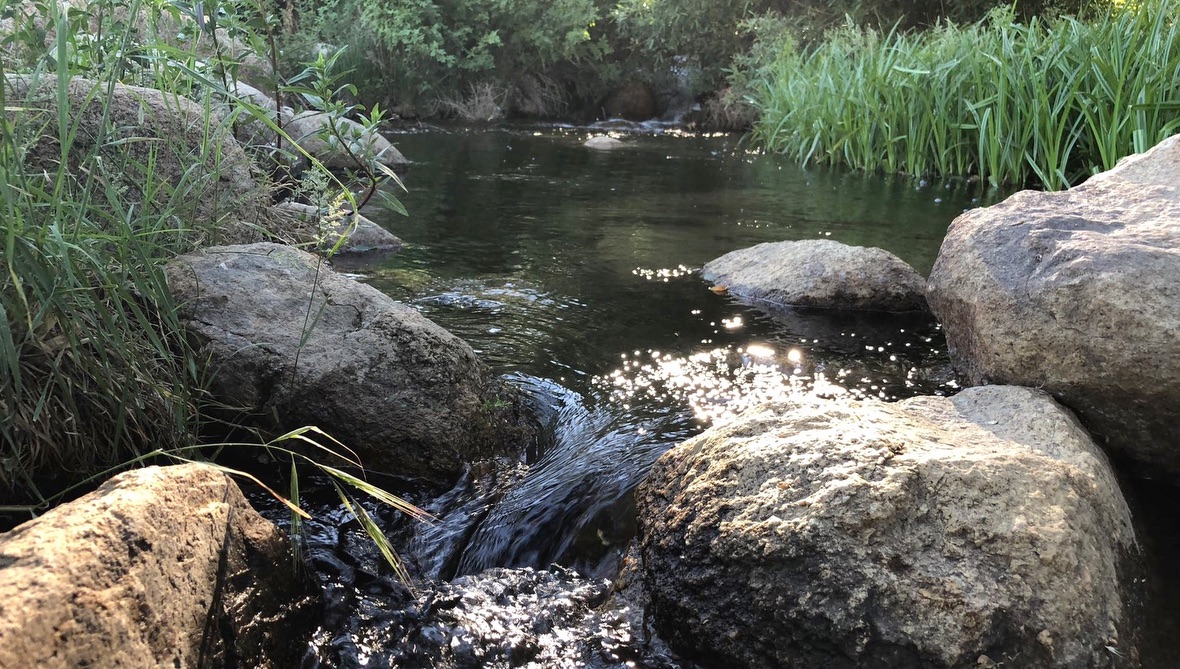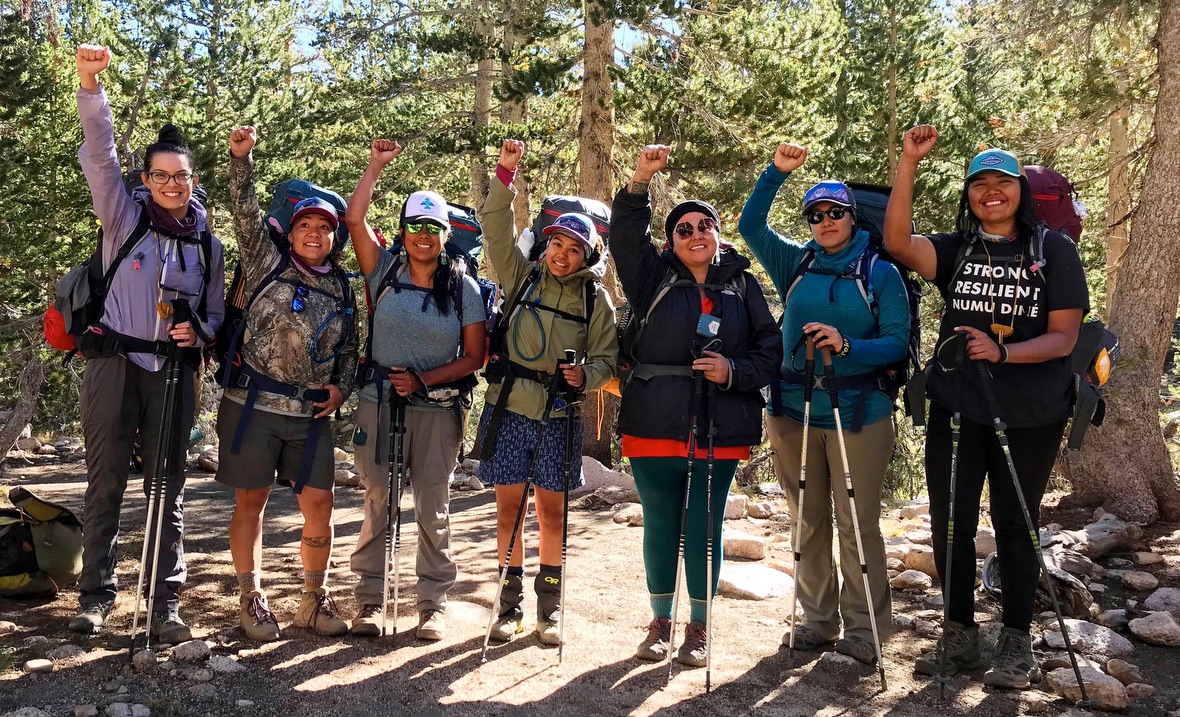| | VISITING PAYAHUUNADU (The Owen’s Valley)If you are coming to a School of Lost Borders Program in California, most likely are you joining us for one of our programs on the Eastern side of the Sierra Nevada. ABOUT THIS LAND AND ITS INDIGENOUS PEOPLE The fault-bound basin between the Sierra Nevada on the west and the White-Inyo Mountains on the east, is known as one of the deepest valleys in the Western United States, with a stunning topographic relief of almost 11,000’ .
This land, from the tops of the White Mountains to the dried ocean floor in Death Valley, is the ancestral, traditional and contemporary homeland of the Nüümü, Paiute Shoshone, who know the valley by the name of Payahuunadü, “The place of flowing water”. The following information is intended as a recognition of the indigenous inhabitants of the Eastern Sierra and the often suppressed colonial history of this country.

The Story of WaterThe Original People of this land were not only stewards of the land, but also stewards of water. Pre colonialism, they tended a thriving ecosystem through a remarkable patchwork of irrigation ditches enabling plants to flourish in their natural habitat and sustaining the tribe for millennia. As most indigenous communities in the US, the Nüümü endured land and water trespasses by live stock owning settlers, starting in the mid 1800’s. In the course of the next century they would suffer land grabs and water wars, massacres, starvation tactics, and forced marches from their homelands. A number of broken treaties culminated in the loss of most all of their land and bound indigenous survivors to small patches of reservations without any water rights. The Owen’s Valley Indian Water Commission is a wonderful resource with a great interactive story map, that weaves together words and images that evoke a clear sense of the history of Payahuunadu told by the Nüümü themselves. Today, over 90% of the land is owned by the Department of Water and Power of Los Angeles. The snowmelt still flows down these mountains, as it has since time immemorial, but since the early 1900’s the water is funneled into a 230 mile long aqueduct that provides water for the city of Los Angeles. Since then, water needs of the growing city have only increased. In the 1970’s LADWP began to pump water from the ground, further desertifying the land, essentially using this area as a resource colony. Over the last century, the valley was literally denatured into an arid desert landscape, with chronically threatening drought conditions and further depleting ground water tables. You can find out more about the Owen’s Valley Los Angeles Aqueduct here , and listen to an engaging 90-minute self-guided car audio tour along U.S. Route 395, examining its controversial social, political and environmental impact on this land through the many diverse voices of the people who live here, indigenous and otherwise. Managing Groundwater with the Paiute is a highly informative 26-min video that features tribal members that we have personal relationship with and great respect for.

Nüümü and Newe Peoples todayThe present day indigenous community of Payahüünadü is active and engaged in strengthening tribal sovereignty and growing resilience. Indigenous Nüümü activists, energized by the occupation of Standing Rock are leaders in protecting indigenous resources in the area, and collaborating with local social justice and environmental groups on a growing number of occasions. Both Big Pine and Bishop tribes strive to not only preserve but remember and uplift their cultural heritage for future generations through traditional skills courses, food sovereignty programs, tribal language classes, local wellness gyms and seasonal farmers markets.
The indigenous fight for First User Water Rights (which is law in California) is ongoing. Increasing awareness and the clear archeological evidence of pre-colonial agriculture on this land reveal a clear legal right to water that the indigenous people have been denied to this day. Linked here is a very interesting article on this last point from the Student Environmental Resource Center at UC Berkeley.

Walking with reverence, respect and care You may not meet any tribal members while you are here. And yet the people of this place are inseparable from the land you are about to visit. This ground holds the bones of their ancestors. Their spirit, past and present is not only etched into artifacts throughout this area, it is living in their practices today. It speaks in patches of carefully tended wild willow harvested every spring for basketweaving, and vibrates in the carefully tended abundance of local indigenous medicine plants. Nuumu prayers are bubbling in the rushing creeks that you may cross, and their songs are intertwined with the winds that have been carving these hillsides for as long as people have been here. We ask of you, as we ask of ourselves, to be good visitors to this land and all living things here. That we may walk with reverence, respect and care on this land, in a world where the gift of open space, and clean water is ever dwindling and precious. ABOUT THE SCHOOLOur founders moved here in the 1981, trading their Bay Area non-profit, where they began their work with modern Rites of Passage, for a more simple, more quiet life in the tiny town of Big Pine, closer to the desert lands they loved. They made the leap with empty pockets and full hearts, trusting those hungry to experience the ceremony would go out of their way to come to this high desert valley, hours from the nearest airport or freeway. Since then, the people have come here to be in solitude and ceremony on the land. Today, the school is located just across the street from where our founders settled some 40 years ago (and Meredith Little still lives). To this day, the school owns no buildings, land or property, and the office is run out of a small cabin on private property. We are located less than a mile from the Big Pine tribal center and gardens, and the seasonal farmers market. If you are interested in volunteering some hours in the tribe’s community garden while you are here please let us know. We are looking forward to being with you, and sharing the beauty of this land. | |